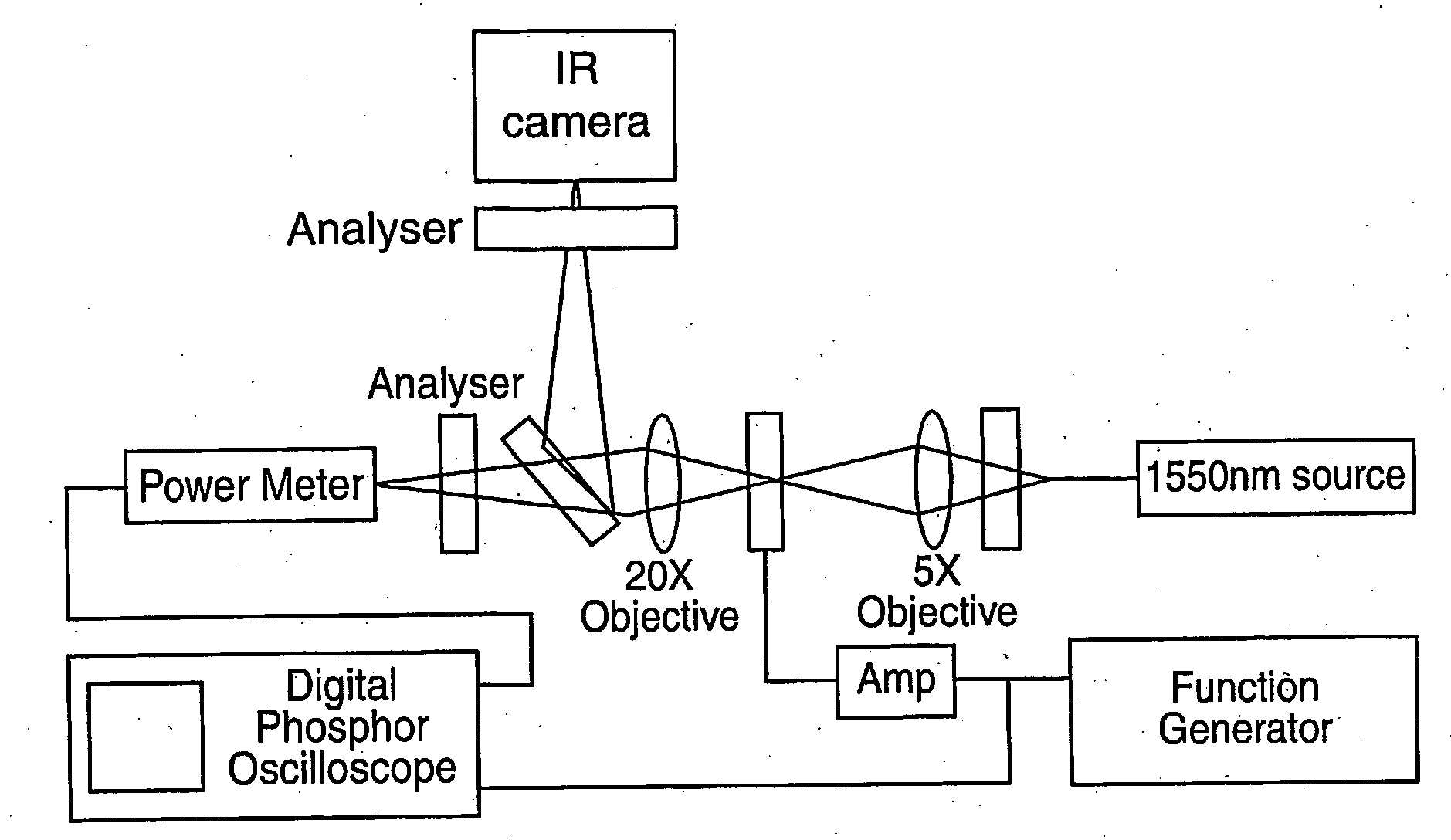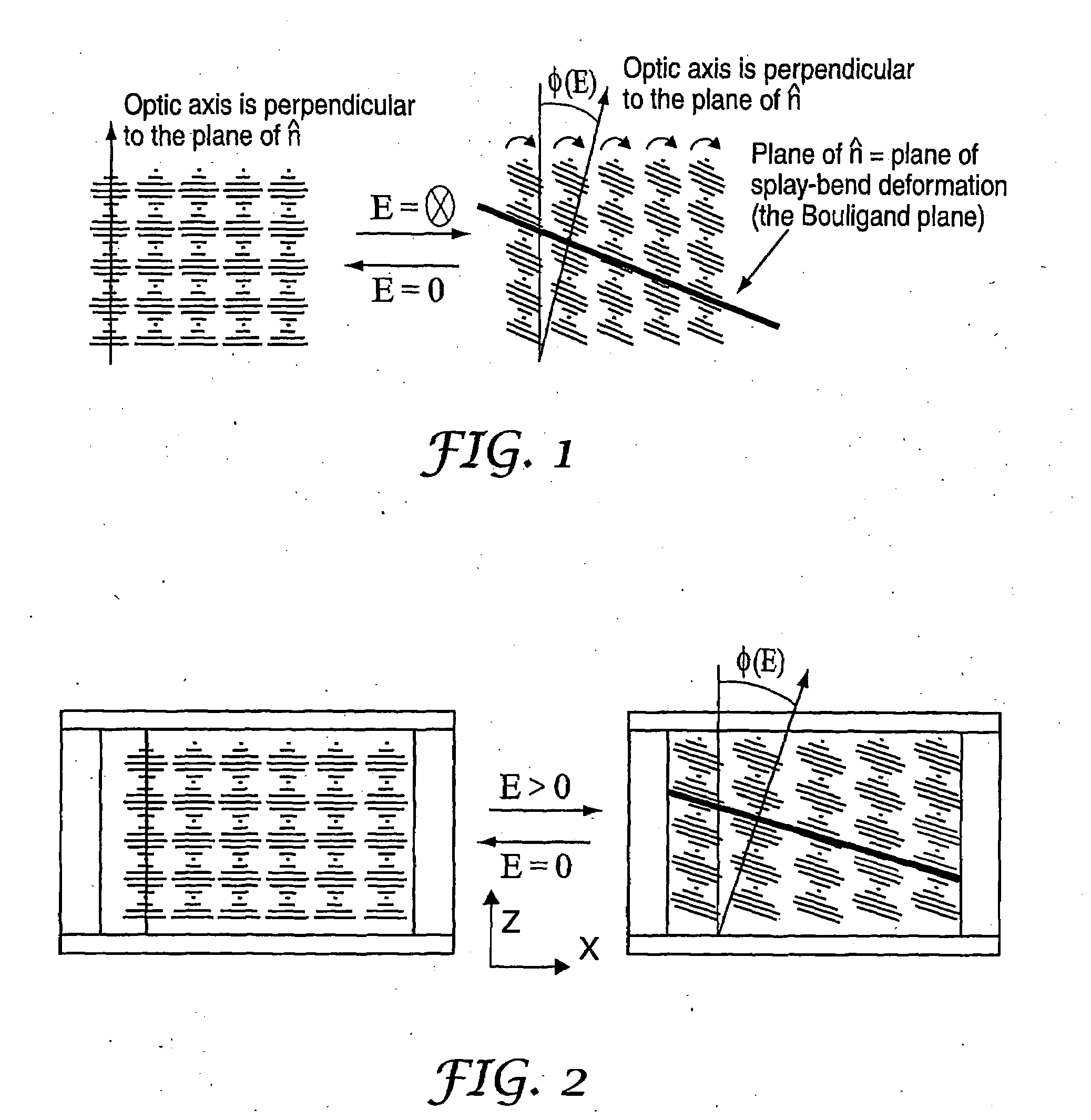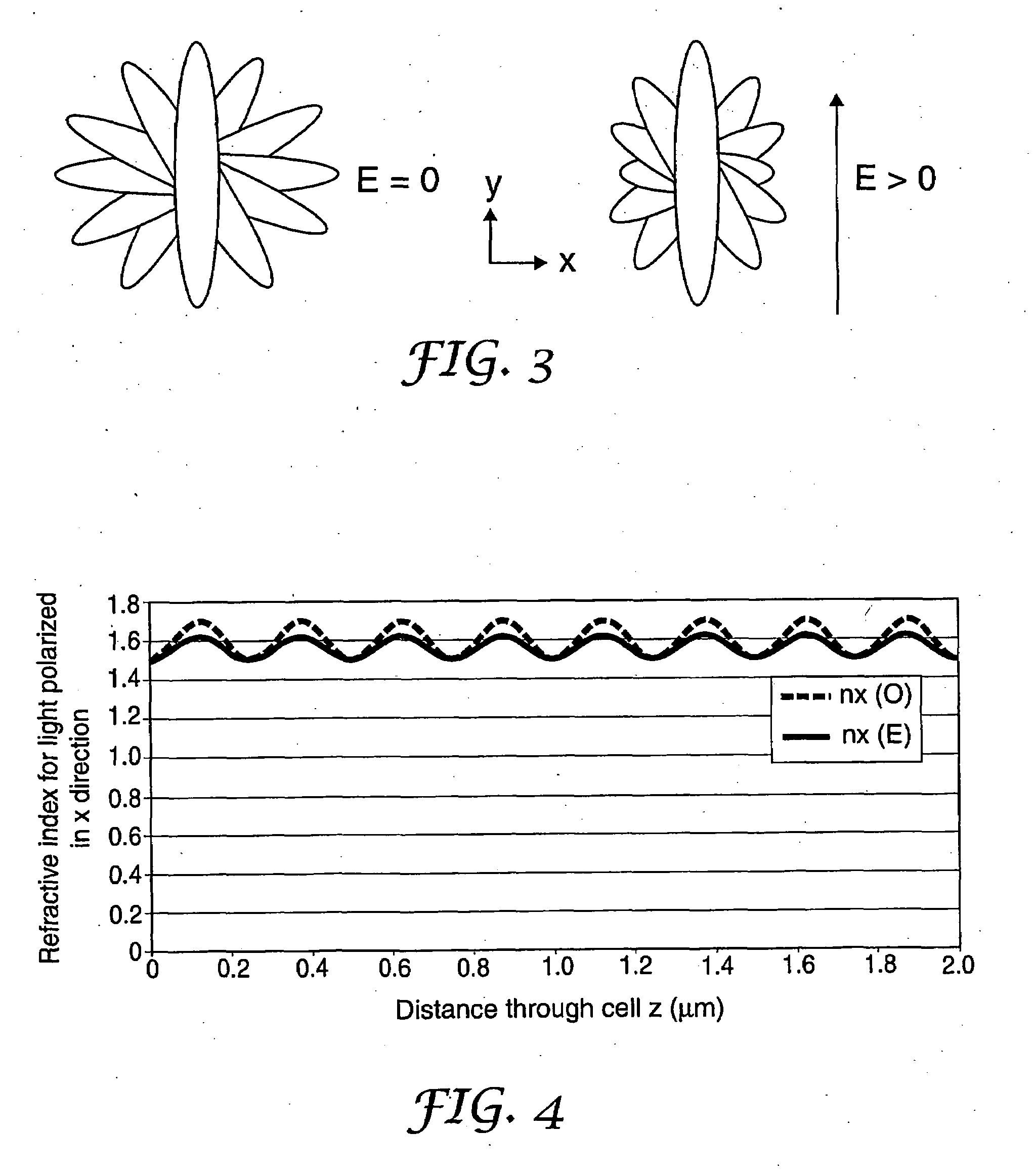Flexoelectro-optic liquid crystal device
- Summary
- Abstract
- Description
- Claims
- Application Information
AI Technical Summary
Benefits of technology
Problems solved by technology
Method used
Image
Examples
Embodiment Construction
[0050]Three separate chiral nematic mixtures were prepared and tested. The first two of these consisted of the non-symmetric bimesogen α-(2′,4-difluorobiphenyl-4′-yloxy)-ω-(4-cyanobiphenyl-4′-yloxy)nonane (known as FFO-9-OCB), whose structure is shown in FIG. 6, and was synthesised in-house specifically for its optimised flexoelectric characteristics of large flexo-elastic ratio and low dielectric anisotropy14. It has been shown that far greater flexoelectric coupling effects can be seen in liquid crystal systems based on bismesogenic liquid crystal compositions 6. The FFO-9-OCB was mixed with the high twisting power chiral dopant BDH1281 (Merck NB-C) in proportions of 2% w / w and 3% for the first and second mixtures respectively. The third mixture consisted of 4-heptyl-alkyloxy-4′-cyanobiphenyl (7OCB), whose structure and flexoelectro-optic properties are well known15, and 3% (w / w) BDH1281, and was intended as a control mixture. Each of these mixtures were heated i...
PUM
| Property | Measurement | Unit |
|---|---|---|
| Fraction | aaaaa | aaaaa |
| Fraction | aaaaa | aaaaa |
| Percent by mass | aaaaa | aaaaa |
Abstract
Description
Claims
Application Information
 Login to View More
Login to View More - R&D
- Intellectual Property
- Life Sciences
- Materials
- Tech Scout
- Unparalleled Data Quality
- Higher Quality Content
- 60% Fewer Hallucinations
Browse by: Latest US Patents, China's latest patents, Technical Efficacy Thesaurus, Application Domain, Technology Topic, Popular Technical Reports.
© 2025 PatSnap. All rights reserved.Legal|Privacy policy|Modern Slavery Act Transparency Statement|Sitemap|About US| Contact US: help@patsnap.com



